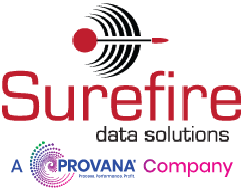Data. It’s everywhere. Always has been. Centuries before anybody even dreamed of endless combinations of ones and zeros, early cultures were keeping track of livestock and trade transactions by using knots tied in rope or cutting notches on a stick. They were simple techniques, but they were the beginnings of what we now call “business data.”
The Evolution of Data
Over time, businesses have become more complex and systems for tracking business data have evolved as well. In the last century alone, accounting systems have gone from hand-written single-entry ledger books, to type-written balance sheets, to punch-card cash flow analysis, to today’s myriad of digital software applications, each providing a way to store the data your business collects. In 2015, it is estimated that 2.5 Quintillion bytes of data was created on a daily basis. The vast amount of business data available to companies today has been hard to comprehend and even harder to manage and analyze.
Consolidate and Configure
The way the computer age has evolved over the past 30 years, companies have been able to take advantage of multiple types of software applications to keep business running smoothly. They might have one application for accounting, another to track sales, another to communicate with customers, still others to track orders, delivery schedules and various types of financial projections and analysis. The trouble is, these applications are not integrated. They can’t “talk” with each other or share data to consolidate information.
As a result, a business owner ends up spending lots of staff time and energy trying to access data from each of these “silos” in order to consolidate useful insights about the overall performance of the business. And the more data there is, the more cumbersome the analysis becomes and the more difficult to see how one aspect of the business affects the others.
Operate Smarter
Having data does not make it useful. From our experience, we have generated hundreds of reports and ad hoc database queries and rarely do these reports explain ‘Why’ something is happening. Sure you can discover what and where an activity is occurring, but knowing the ‘Why’ allows you to operate smarter which is really the essence of analytics.
At Surefire Data Solutions, we are developing new technologies to facilitate the transformation of your data into meaningful information – delivered to the right people in a timely manner – for improved decision making.


